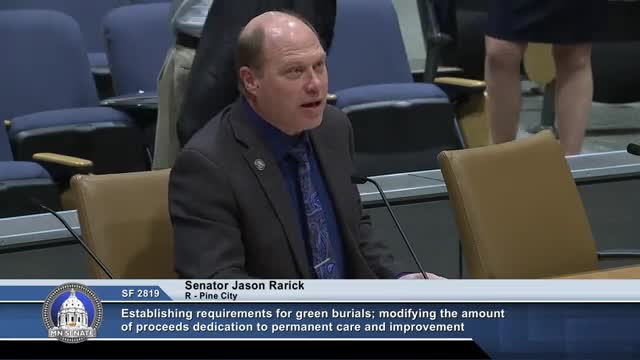Minnesota senators advance natural burial regulations following green burial study
March 28, 2025 | 2025 Legislature MN, Minnesota
Thanks to Scribe from Workplace AI , all articles about Minnesota are free for you to enjoy throughout 2025!

This article was created by AI using a video recording of the meeting. It summarizes the key points discussed, but for full details and context, please refer to the video of the full meeting. Link to Full Meeting
The meeting highlighted a bill aimed at establishing minimum burial depth requirements and setbacks from water sources, which local county officials have been advocating for. These parameters are intended to provide a framework for zoning decisions related to natural burials, alleviating concerns from both officials and community members. The bill also includes an amendment allowing for the scattering of cremated remains from both fire and water cremation methods, expanding options for families.
Testimony from stakeholders underscored the importance of these regulations. Matt Connell, caretaker of Loving Earth Memorial Gardens in Carlton County, expressed his support for the bill while also voicing concerns about the previous moratorium on natural burials, which he felt unfairly targeted his efforts. Connell emphasized that the initiative aims to create a sanctuary for both the deceased and the grieving, integrating nature into the burial process.
The committee's discussions also touched on cultural sensitivities, with representatives from various religious groups confirming that the proposed regulations would not conflict with their burial traditions. This collaborative approach aims to foster community acceptance of natural burials, which are already being practiced in several cemeteries across Minnesota.
As the committee moves forward, the implications of these regulations could reshape burial practices in the state, promoting environmentally sustainable options while addressing community concerns. The next steps will involve further discussions and potential adjustments to the bill as it progresses through the legislative process.
Converted from Committee on State and Local Government - 03/27/25 meeting on March 28, 2025
Link to Full Meeting
Comments
View full meeting
This article is based on a recent meeting—watch the full video and explore the complete transcript for deeper insights into the discussion.
View full meeting